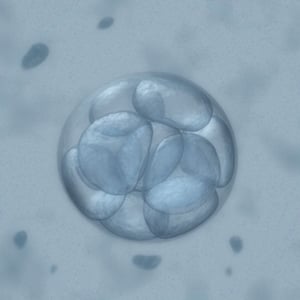We are experiencing a very high volume of calls and messages and ask for your patience. We will answer your portal messages within 48 hours.
We are experiencing a very high volume of calls and messages and ask for your patience. We will answer your portal messages within 48 hours.

The technologies for successfully freezing embryos have now been available for more  than twenty-five years.
than twenty-five years.
With improved freezing techniques, the success rates with frozen embryo transfer (FET) are now equal to or even better than those achieved with the transfer of fresh embryos. The pregnancy outcomes with frozen embryos also seem to be better than their fresh counterparts.
With elective FET, there is less preterm labor and fewer small for gestational age infants. This improved outcome may be due to the increased receptivity of the uterine lining in a FET cycle. In a fresh IVF cycle, stimulation of the ovaries with fertility drugs results in high levels of hormones that result in a less receptive uterine lining.
Based on mouse studies, researchers have shown that implantation of embryos in sub-optimal uterine lining results in defective placental formation and fetal growth. In a FET, the uterine lining is exposed to physiological levels of hormones resulting in a uterine lining that is ideal for the embryos to implant.
A reasonable question then is, “Should we only transfer frozen embryos?”
A recent review of the literature (meta-analysis) shows that there may be higher pregnancy rate with FET (Odds Ratio 1.32; CC 1.10 – 1.59). Meaning, there is a 32% increase in pregnancy rates. If this were truly the case, then a switch to routine FET would be an obvious choice.
A closer analysis of the data showed that there were only three small trials (one of which was retracted from the literature) included in this meta-analysis. Also, the patients included were those with normal or excessive response to the fertility medications. These are patients that usually have excellent pregnancy rates and it may be wrong to apply these data to a general patient population that would include poor responders with relatively few eggs and embryos.
Another factor that needs to be considered is that these studies only show results per embryo transfer. They do not include all patients that started the IVF process. Also the stage of embryo transfer (day 3 vs. day 5) and other patient variables such as age, smoking, previous pregnancies and preexisting health conditions need to be included.
Another disadvantage of routinely freezing all embryos is the concern that some embryos may be lost in the freezing and thawing process. The technical skill of the embryology laboratory is also critical.
At InVia, we have been using a technique called “vitrification” for many years now. Our embryo survival rate is in excess of 95%. This may not be the case at IVF centers with suboptimal freezing outcomes where routine freezing could result in a decrease in success rates.
To summarize: FET’s have excellent success rates and pregnancy outcomes. There, however, is a need for more studies comparing fresh vs. FET before we can recommend abandoning fresh embryo transfers and doing only FET.
To work with a qualified, board-certified fertility specialist, make an appointment at one of InVia's four Chicago area fertility clinics. 

Entire Website © 2003 - 2020
Karande and Associates d/b/a InVia
Fertility Specialists
